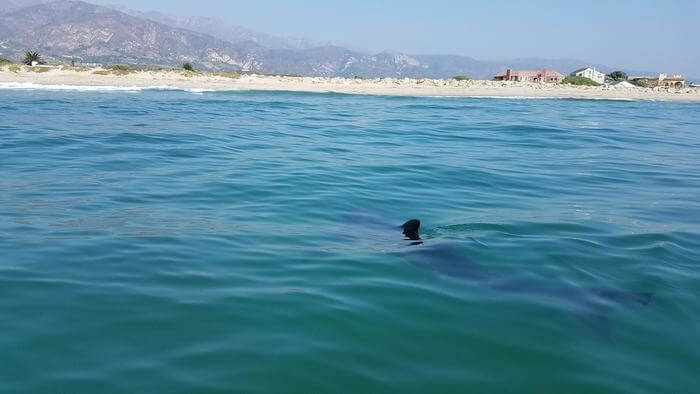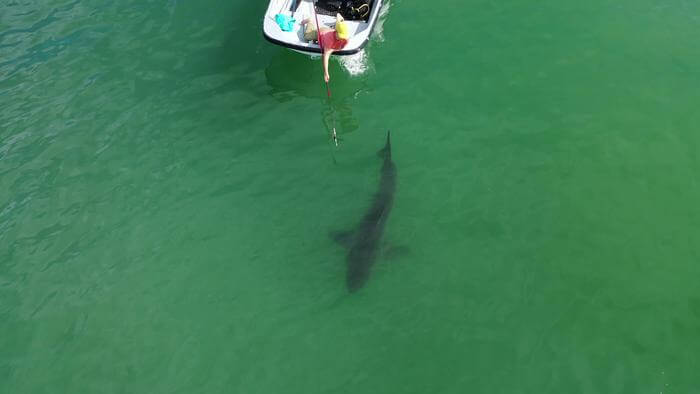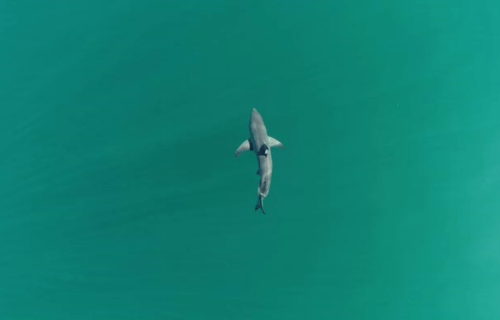SANTA BARBARA, Calif. — Few sights are as terrifying in the ocean as seeing a shark’s fin, but what about a baby shark? Interesting new research suggests swimmers along coastlines are far more likely to encounter adolescent sharks than full-grown predators. Marine scientists report juvenile great white sharks tend to prefer being closer to the shore. These younger specimens habitually selected warm and shallow waters to gather within one kilometer of the shore.
Study authors stress these findings are key to the conservation of great white sharks, especially as the planet’s ocean temperatures continue to increase due to climate change. This work is also relevant when it comes to protecting the public from dangerous shark encounters.
In contrast to the human childhood experience, baby great white sharks (pups) don’t receive any maternal care after birth. Among a studied population of sharks off the coast of Padaro Beach near Santa Barbara in central California, pups and juveniles tend to gather in “nurseries,” totally unaccompanied by adults.
“This is one of the largest and most detailed studies of its kind. Because around Padaro Beach, large numbers of juveniles share near-shore habitats, we could learn how environmental conditions influence their movements,” says senior author Dr. Christopher Lowe, a professor at California State University, in a media release. “You rarely see great white sharks exhibiting this kind of nursery behavior in other locations.”

In 2020 and 2021, Dr. Lowe and his team used darts to tag 22 juveniles with sensor-transmitters. Tagged sharks included both females and males, between one and six years-old. Great white sharks can live for 40 to 70 years.
The sensor transmitters measured local water pressure and temperature in real-time, tracking each juvenile’s position by sending out acoustic pings into an array of receivers spread out over roughly 5.5 sq km of the shoreline. These methods were approved by the university’s Animal Care and Use Committee and California’s Department of Fish and Wildlife.
Tracking, meanwhile, stopped during the winter months. During this period, juveniles temporarily leave for offshore waters. Researchers gathered additional data on the temperature distribution throughout the local water column using an autonomous underwater vehicle. Then, they used artificial intelligence to train a 3D model depicting the juveniles’ temperature and depth preferences.
Results showed that the juveniles dived to the greatest depths around dawn and dusk, likely while foraging for skates, rays, schooling fish, and other small bony fish. They moved closest to the surface (between zero and four meters deep) in the afternoon when the Sun was at its hottest, perhaps to increase their body temperature.
“We showed that juveniles directly altered their vertical position in the water column to stay between 16 and 22 °C, and if possible between 20 and 22 °C. This may be their optimum to maximize growth efficiency within the nursery,” explains first author Emily Spurgeon, a former master’s student and current research technician in Lowe’s team.

Ensuing results showed the temperature distribution in these waters is “ever changeable,” meaning juveniles must remain constantly on the move to remain within this optimal range. In conclusion, study authors say juvenile great white sharks spend most of their time in much shallower water than adults. Adults were rarely seen in the nursery.
These findings also show that the temperature distribution across three dimensions strongly influenced the horizontal distribution of the juveniles, which saw them spread out at greater depths when seafloor temperatures were higher and move closer together toward the surface when the deeper water was cooler.
Interestingly, study authors admit they still don’t know what benefits pups and juveniles gain from gathering in nurseries. The tendency may help baby sharks avoid predators.
“Our results show that water temperature is a key factor that draws juveniles to the studied area. However, there are many locations across the California coast that share similar environmental conditions, so temperature isn’t the whole story. Future experiments will look at individual relationships, for example to see if some individuals move among nurseries in tandem,” Spurgeon concludes.
The study is published in the journal Frontiers in Marine Science.
